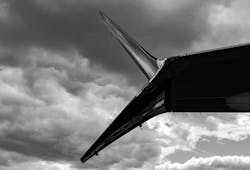The ancient computers in the Boeing 737 Max are holding up a fix
CHICAGO - A brand-new Boeing 737 Max gets built in just nine days. In that time, a team of 12,000 people turns a loose assemblage of parts into a finished $120 million airplane with some truly cutting-edge technology: winglets based on ones designed by NASA, engines that feature the world’s first one-piece carbon-fiber fan blades, and computers with the same processing power as, uh, the Super Nintendo, reports Darryl Campbell for The Verge. Continue reading original article.
The Intelligent Aerospace take:
April 9, 2020 -As Campbell notes in his piece for The Verge that The 737 Max's 16-bit, single-core processors aren't exactly keeping up with contemporary computing powerhouses, but "of course, old and slow isn’t always worse: the 737 Next Generation series is the safest narrow-body airplane ever made, in part due to these reliable, if unspectacular, computers." Airbus also utilizes a vintage computer in its A320neo, but it uses seven of them.
Both Boeing and the FAA agree that the underlying issue with the grounded Max is related to software, and the aerospace giant does not plan on updating its hardware while it works to get the commercial aircraft back into service.
Boeing is “dedicating all resources necessary to ensure that the improvements to the 737 MAX are comprehensive and thoroughly tested,” a spokesperson told The Verge. “We do not anticipate changes to the hardware.”
Related: The cost of the Boeing 737 Max crisis: $18.7 billion and counting
Related: Boeing’s Max not likely to return until mid-2020 at the earliest
Related: GE's new billion-dollar problem? Boeing's MAX
Jamie Whitney, Associate Editor
Intelligent Aerospace
